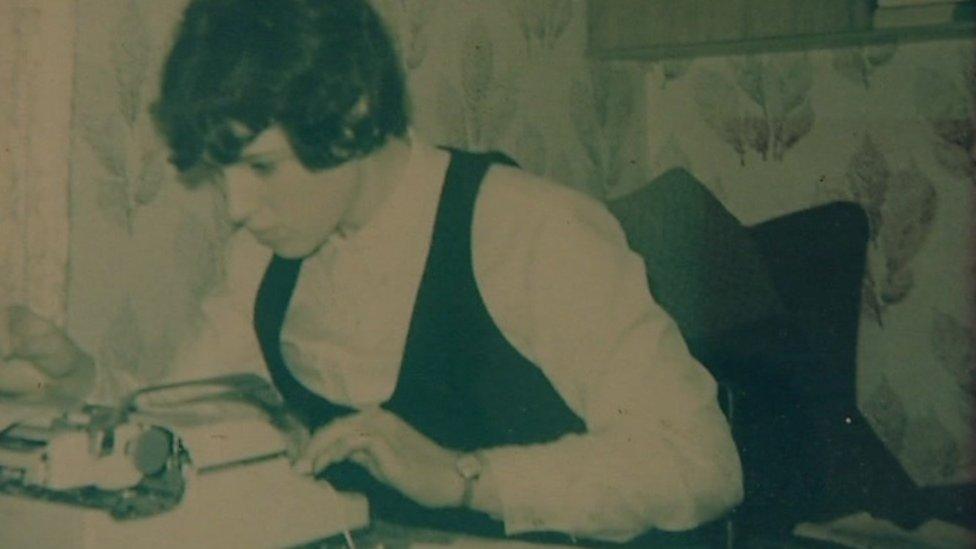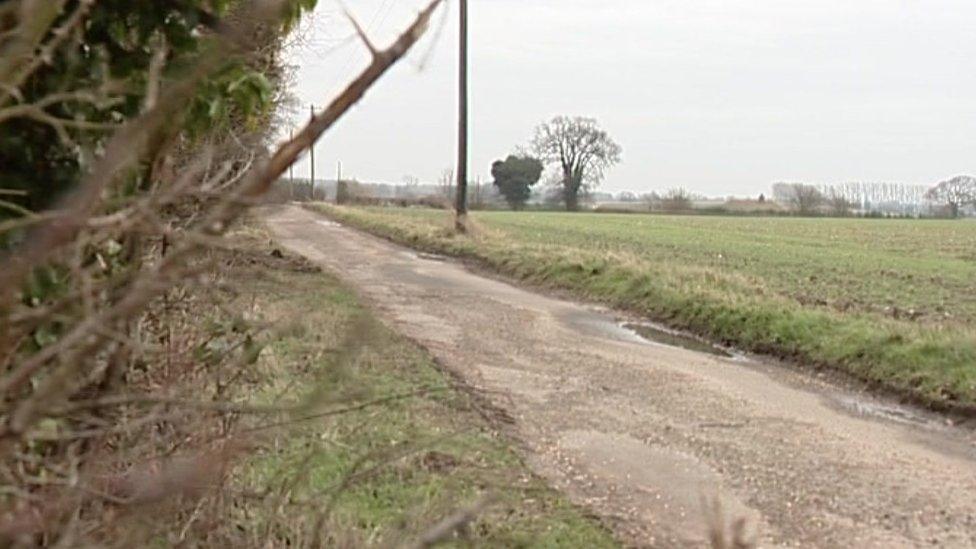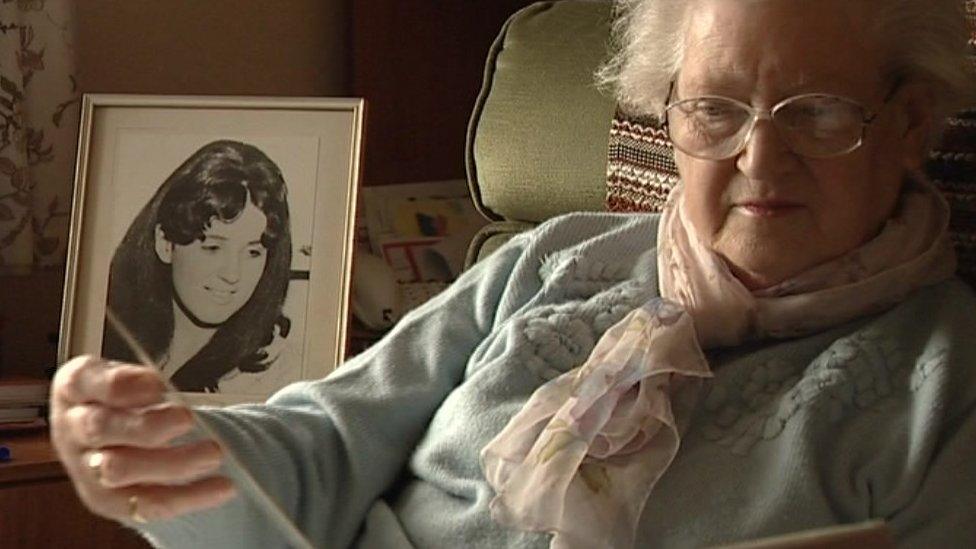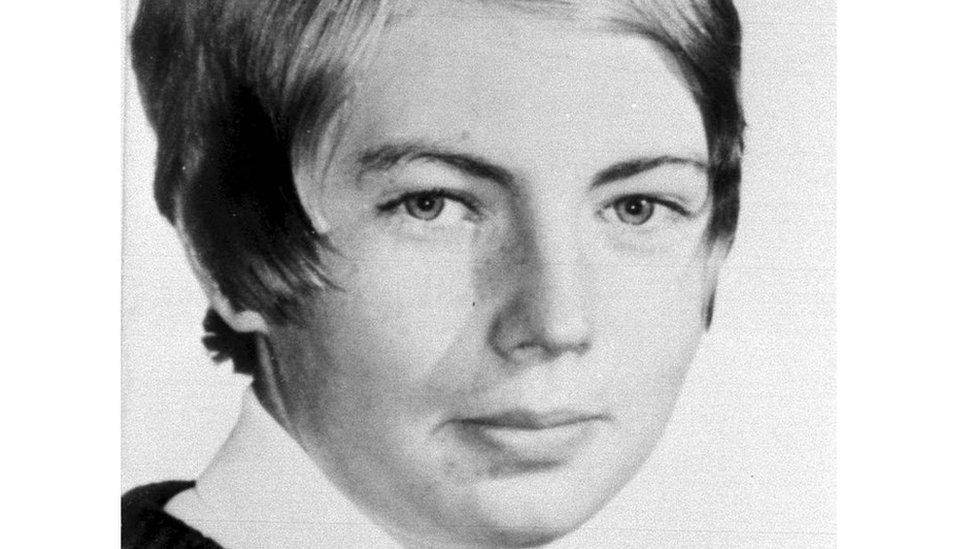Susan Long murder: Case 'could still be solved' 50 years on
- Published

Susan Long was found dead in a country lane in March 1970
Police investigating the unsolved murder of a teenager 50 years ago have said her killer could still be identified even if he has died.
Susan Long, 18, had been out dancing on 10 March 1970 and got on a bus home to Aylsham, Norfolk, but her body was found in a country lane the next day.
She had been sexually assaulted and strangled.
Andy Guy, cold case manager for Norfolk Police, said: "We have DNA, so with a name - and DNA - it is solvable."
He added: "Let's say the killer was 30 at the time, he would be 80 now - there's a chance he could still be alive. And even if he is not, there are tests we can do to establish that DNA link.
"We could even exhume a body if it came to that."
Last journey
Miss Long worked as a clerk at Norwich Union and regularly went to the Gala in Norwich with her "steady" boyfriend, who lived in the city.
She left at about 22:25 GMT and was seen getting on the Aylsham bus, which arrived at her usual bus stop - the Market Place - at 23:10.
"She had just got a car so she knew it would be one of her last bus journeys. Sadly, it turned out to be the case," said Mr Guy.
"It's always been assumed she got off the bus at the Market Place but it's really unclear. The bus driver was questioned at the time but did not remember."
From there, it was a seven-minute walk to her parents' home in Sir Williams Lane, via White Hart Street and Gashouse Hill.
At 05:30, a milkman found her body, face-down in a puddle by the side of a country lane at Spratt's Green, just outside Aylsham.

The lane near Aylsham where Susan Long's body was found
Miss Long's killer - described as "panicked" by Mr Guy - made no attempt to conceal her body, which was on view near a farm entrance.
She was fully clothed but a bracelet and shoe were missing and have never been recovered.
There were no signs of a violent struggle and a pathologist believed she had died at about midnight.
Forensic evidence revealed whoever had sexually assaulted her had a rare blood type.
Officers took 835 blood samples, spoke to 3,700 people and completed 10,000 questionnaires while knocking on doors.
"It was a huge investigation for the time," said Mr Guy, as the force launched a 50th anniversary appeal.
"They were very thorough - fragments of bitumen were found on her and they contacted Shell, which established it was from the road surface where she was found.
"A paint fragment from a car was also found, which suggested she had been in contact with such a car."

Miss Long's mother Molly died in 2014
Her boyfriend was eliminated from the inquiry, as were fellow bus passengers, and no link was established with men of a similar blood type - although, as Mr Guy pointed out, an individual could simply refuse to provide a blood sample in the 1970s. The trail soon went cold.
The biggest breakthrough came in 2004, when familial DNA was established from samples taken at the time.
It ruled out everyone who had provided a sample of a rare blood type.
Fifty years on, Mr Guy believes the killer was someone local, with knowledge of the area.
'Last roll of dice'
"There are rumours that have been around the town for years - we've had several names given to us and we've looked at them," he said.
"If there is someone people have always felt suspicious of, perhaps how they act around the anniversary, then we need to hear about it.
"We are on the last roll of the dice in terms of people's memories - unless we get that DNA match I don't see where else we could go."
Miss Long's mother Molly died in 2014 "never having had closure as to who killed her daughter", and "it was "impossible to understand the pain she endured for all those years", he added.

Find BBC News: East of England on Facebook, external, Instagram, external and Twitter, external. If you have a story suggestion email eastofenglandnews@bbc.co.uk, external
- Published30 August 2019

- Published8 April 2019

- Published26 January 2016
